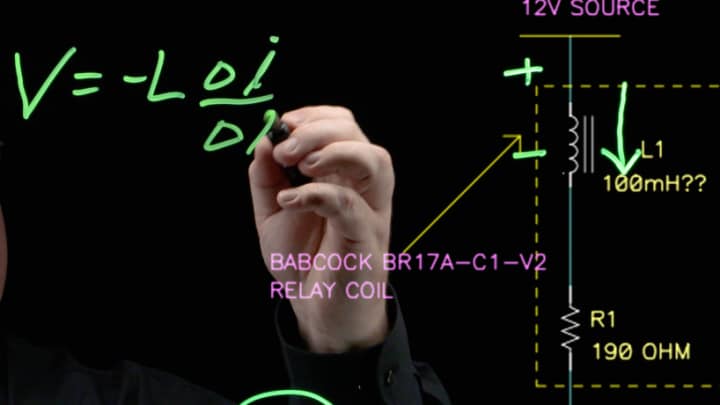Design With the Support of the Largest A&D Semiconductor Supplier to Help You Achieve Mission Success
In Aerospace and Defense (A&D), mission assurance refers to the guarantee that all the disciplines involved in bringing a product to market work together to minimize risk while meeting your end clients’ requirements. As the leader in the A&D semiconductor industry, our mission is to bring the latest technology and knowledge to our products, software and support so that you can achieve mission assurance, minimizing your risk and maximizing the outcome.

Tune In to Our Second Installment
Hosted by Eli Kawam, our two-part educational broadcast will cover a wide range of technical topics. Our expert Paul Schimel will dive into case studies about power and cover design tips and tricks so that you can achieve your personal mission assurance.

Installment Two
Episode #1: Troubleshooting the SG1524
Available On Demand
In Episode One, we investigate and troubleshoot the application of the SG1524, a very popular Pulse-Width Modulation (PWM) controller. In this episode you will get a better understanding of the application, how to safely wire-or the two emitter phases of the device and considerations for layout and decoupling. In addition to the above, we will discuss proper switching capacitor value selection and how it affects dead-time performance.
Episode #2: Introduction to a Baker Clamp
Available On Demand
In Episode Two, we troubleshoot why a simple BJT (2N2222) is unable to drive a relay coil. We analyze how it is affected by drive levels, investigate assumptions about Beta and VCE saturation and the benefits of using a Baker clamp to maintain drive capability.
Installment One
Episode #1: Quartz Crystals
Available On Demand
The first episode will provide a detailed overview of the piezoelectric effect, resonator structures, cuts, vibration modes and overtones. We will also compare the frequency and temperature performance of AT- and SC-cut crystals and explain how quartz becomes a resonator and how to implement the resonators into designs.
Episode #2: Oscillators: XOs, VCXOs, VCSOs and TCXOs
Available On Demand
In this episode, we will discuss basic crystal oscillators, their functionality and how to supplement a crystal oscillator with a temperature sensor and feedback voltage to result in a TCXO. Finally, we’ll discuss some important considerations such as jitter and hysteresis for unheated oscillators.
Episode #3: Temperature-Controlled Oscillators: EMXOs, MCXOs and OCXOs
Available On Demand
We’ll look at oven-controlled oscillators and how they achieve such tight frequency control over temperature. We’ll discuss oven control circuitry, thermal design, frequency stabilities, construction topologies and gas backfill types. The episode will finish with a discussion of hysteresis, retrace and temperature coefficients.
Episode #4: Modules and Disciplined Oscillators
Available On Demand
This episode will introduce disciplined modules using GPS satellites. We will discuss topics such as frequency, phase holdover and holdover estimation techniques. We’ll also explain the different Stratum levels and discuss how to integrate Chip Scale Atomic Clocks (CSACs), rubidium and cesium references into disciplined modules.
Episode #5: Phase Noise and Short-Term Stability
Available On Demand
Phase noise is one of the most important parameters for many applications, especially radar systems. We will explain phase noise and how it consists of different noise sources between the crystal and the electronics. This discussion will consist of topics such as frequency and time domain, power law, short-term stability and noise mitigation.
Episode #6: Acceleration Sensitivity of Quartz Oscillators: Phase Noise Under Vibration
Available On Demand
Vibration is everywhere and the magnitude and frequency are critical to the impact on an oscillator. In this episode, we will discuss acceleration sensitivity in quartz oscillators and how to calculate phase noise under vibration. We’ll introduce active and passive methods to mitigate acceleration sensitivity and highlight a few of our products.
Episode #7: Challenges and Sources of Error
Available On Demand
In this episode, we explore common challenges and compromises when designing quartz oscillators. We’ll look at the frequency budget for the life of the product, short- and long-term aging, frequency tolerances, load and voltage stability and how each is tested. Finally, we’ll discuss performance differences based on how the product is installed.
Episode #8: Quartz Oscillators in Space
Available On Demand
In this episode, we’ll cover the effects of radiation on both quartz and quartz oscillator circuitry and review the advantages and disadvantages of operating in a vacuum for various quartz oscillator types. At the end, we’ll review quartz oscillator reliability.
Episode #9: Surviving the Extremes: Oscillators for Shock, Vibration and Temperature
Available On Demand
Many rugged conditions require oscillators to maintain their stability far outside normal conditions. In this episode, we’ll review the design approaches and construction techniques used to develop oscillators that can withstand shock, vibration and wide temperature ranges. We’ll also present an overview of military standards and how the products are tested.
Episode #10: Alternate Resonators: SAW, MEMS and Atomic
Available On Demand
This episode will introduce three common alternates to bulk quartz oscillators including silicon MEMS, SAW and atomic resonators. We’ll study the trade-offs between these technologies as they compare to quartz with particular emphasis on the "MEMS or quartz" debate. We’ll also highlight a few of our MEMS, SAW and atomic clock products.